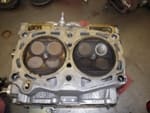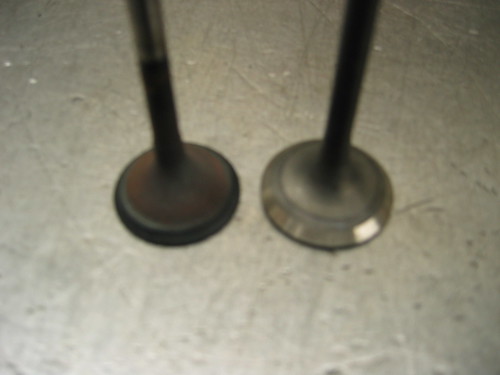
A fairly common repair we have had to make to the 2004 and up Turbo charged 2.5l is a valve job as a result of one or more burnt valves, but what is a burnt valve and more importantly how can I avoid it?

Subaru Exhaust Valve Issue in Seattle

Subaru Exhaust Valve Problem

Seattle Subaru Burnt Exhaust Valve
Typically what causes a valve to become burnt, worn or cracked is excessive heat either do to lack of lubrication or excessive combustion chamber temperature as a result of the incorrect fuel mixture. A weak fuel injector is typically the culprit on an DOHC Turbo charged models from 2004 to 2008. This usually starts out as some rough running when cold and finally setting a check engine light with a cylinder misfire code. If the weak fuel injector is not caught it can slowly overtime allow the combustion chamber temperatures to become higher than designed ultimately damaging a valve. There are of course other reasons this can happen such as tolerances that are not within specs, or a driver that constantly pushes the oil change intervals a little to far. Its also possible that the valve it self is defective we have seen that as well. What we have noticed is that based on the misfire data observed form these engines when cold there can be some minor signs of trouble long before the check engine light is ever illuminated, we whenever possible for our local Subaru customers in the Greater Seattle area will connect the Subaru Select monitor to the Turbo models and try to look at some data from history if we don’t get an opportunity to have the vehicle cold.
If you own one of these vehicles and if you start to notice a vibration from the engine when cold at idle I would encourage you to have the misfire data monitored especially if you have a vehicle that is still under Subaru’s 5 year 60,000 mile power train warranty as making the attempt to complain about it ahead of the warranty expiring may extend the warranty for you a bit . We typically suggest a fuel injection service starting at the 60k interval as maintenance and I can tell you we that when we have observed a weak injector there really hasn’t been to much we have been able to do short of replacing the fuel injector it self.
I wan to stress that its after we have seen the same type of issue multiple times and think we have a theory on whats happening and can provide some information that should help Subaru Owners avoid an expensive repair that I will finally post the article. If its a one time thing there is almost never going to be a post about it, but after 6 or 7 repairs a theme is starting and I believe it time to get some information out to our readers.
Thanks for reading
Justin